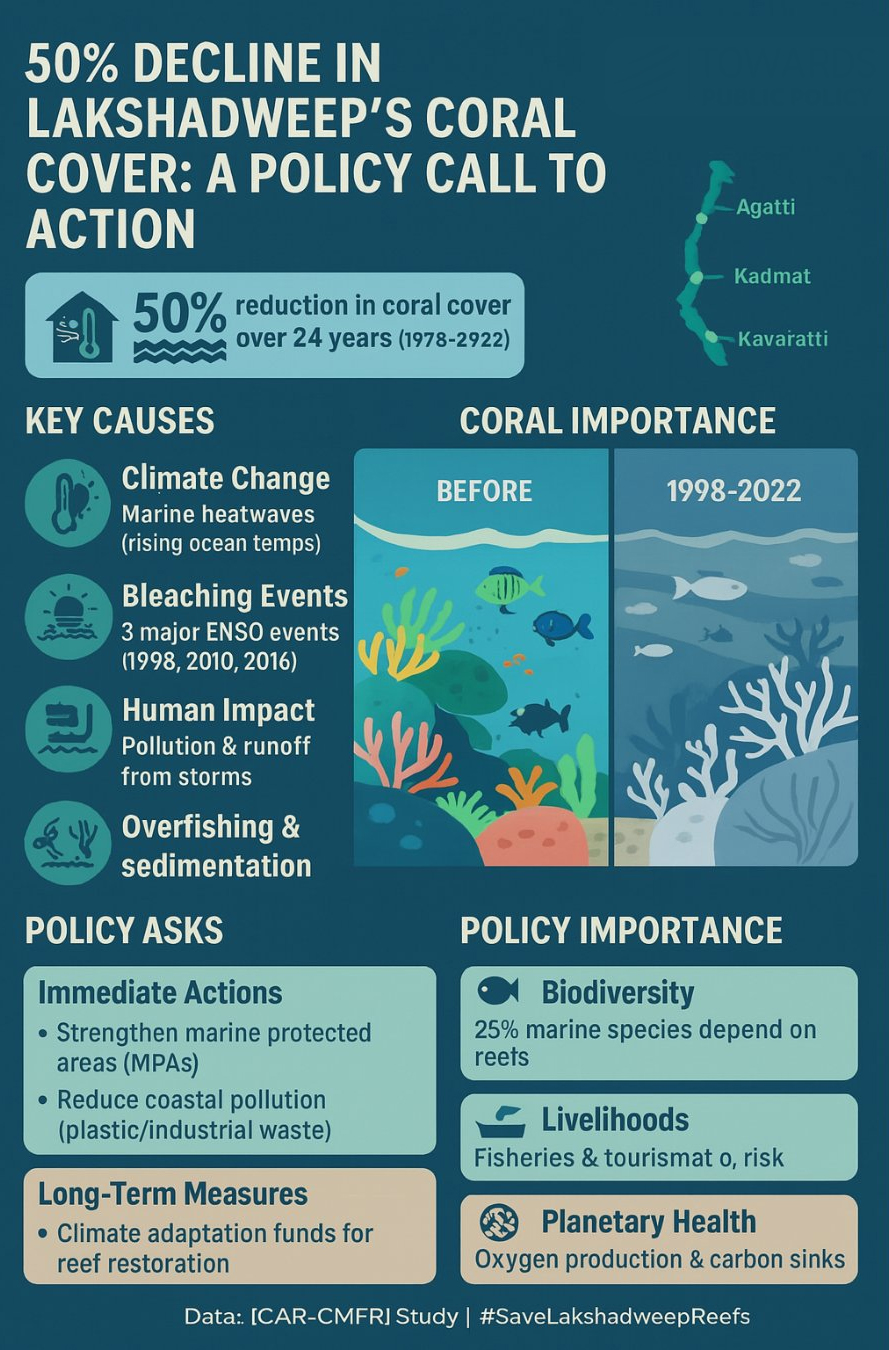Context:
A recent 24-year study on coral reefs in the Lakshadweep archipelago has revealed a concerning 50% decline in coral cover since 1998. The study, published in the journal Diversity and Distributions, highlights the impact of repeated marine heatwaves exacerbated by climate change on these vital ecosystems.
Key Findings of the research:
- Coral Cover Decline: Coral cover has declined from 37.24% to 19.6%, reflecting a roughly 50% reduction from the 1998 baseline.
- Reduced Recovery Rate: The decline is attributed to reduced recovery rates after each bleaching event, despite coral mortality decreasing with successive events.
- Critical Recovery Period: Recovery rates dramatically increase after six years, suggesting a critical period of bleaching-free years needed for reefs to recover.
Causes of Decline:
Several interlinked factors have contributed to the decline of coral reefs in the Lakshadweep Archipelago:
· Climate Change: Rising global temperatures have increased sea surface temperatures, pushing corals beyond their thermal tolerance. This causes coral bleaching, where corals expel the symbiotic algae (zooxanthellae) that provide them with energy and color—often leading to widespread coral death if stress persists.
· Marine Heatwaves: The region suffered three major marine heatwave events—in 1998, 2010, and 2016. These events caused sharp declines in live coral cover, especially during the 2010 event, which had the highest Degree Heating Weeks (DHW).

About Coral Reefs:
Coral reefs are complex, underwater ecosystems formed by tiny animals called coral polyps. These ecosystems are found in warm, shallow, and clear tropical waters and are known for their high biodiversity and essential ecosystem services.
· Coral reefs are formed by the accumulation of calcium carbonate skeletons of coral polyps over time.
· Lakshadweep's coral reefs are a significant ecological feature of the islands, known for their biodiversity and importance to the local ecosystem. It consists of 36 islands, 12 atolls, 3 reefs, and 5 submerged banks.
Common types of coral reefs include:
· Fringing reefs (close to shore)
· Barrier reefs (separated from shore by a lagoon)
· Atolls (ring-shaped reefs surrounding a lagoon)
Importance of Coral Reefs
These coral reefs support rich biodiversity, providing essential ecosystem services, including:
· Coastal Protection: Coral reefs act as natural barriers against waves and storms, protecting the islands from erosion and damage.
· Biodiversity Hotspots: Coral reefs are home to a vast array of marine life, including numerous fish species, corals, and other invertebrates.
· Fisheries and Livelihoods: Coral reefs provide a source of food and livelihood for local communities, supporting fisheries and the fishing industry.
· Tourism: The beauty and diversity of coral reefs make them a popular destination for tourists, contributing to the local economy.
Conclusion:
The study's findings emphasize the need for urgent action to protect coral reefs and promote their recovery. By understanding the complex relationships between climate change, local conditions, and coral reef health, scientists and conservationists can work together to preserve these vital ecosystems.






